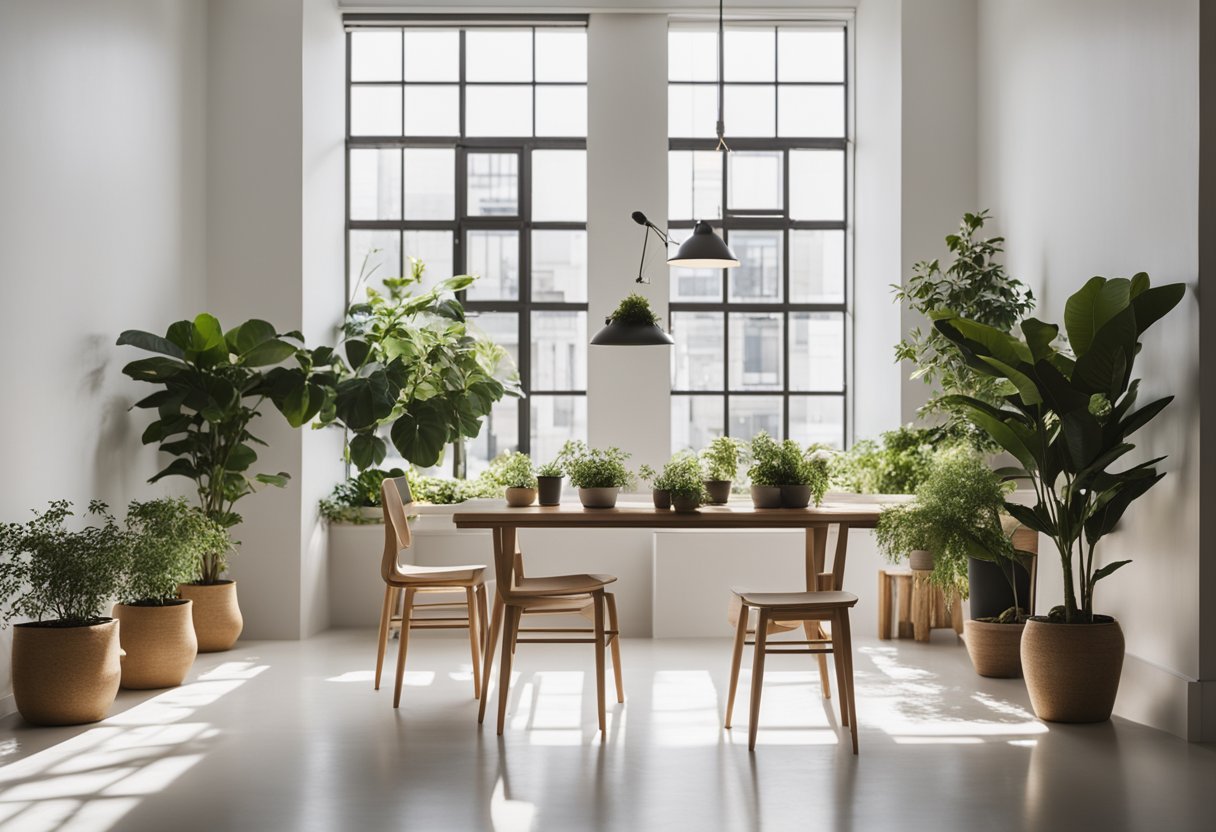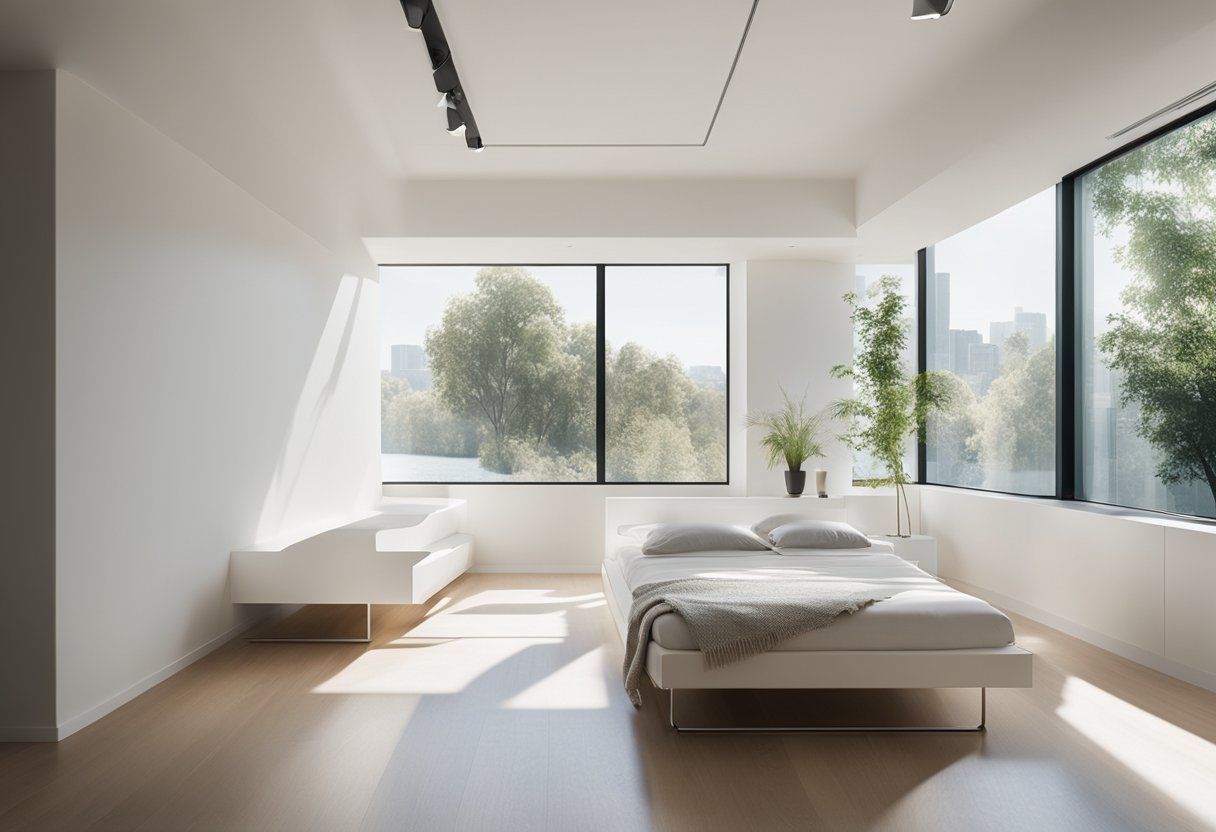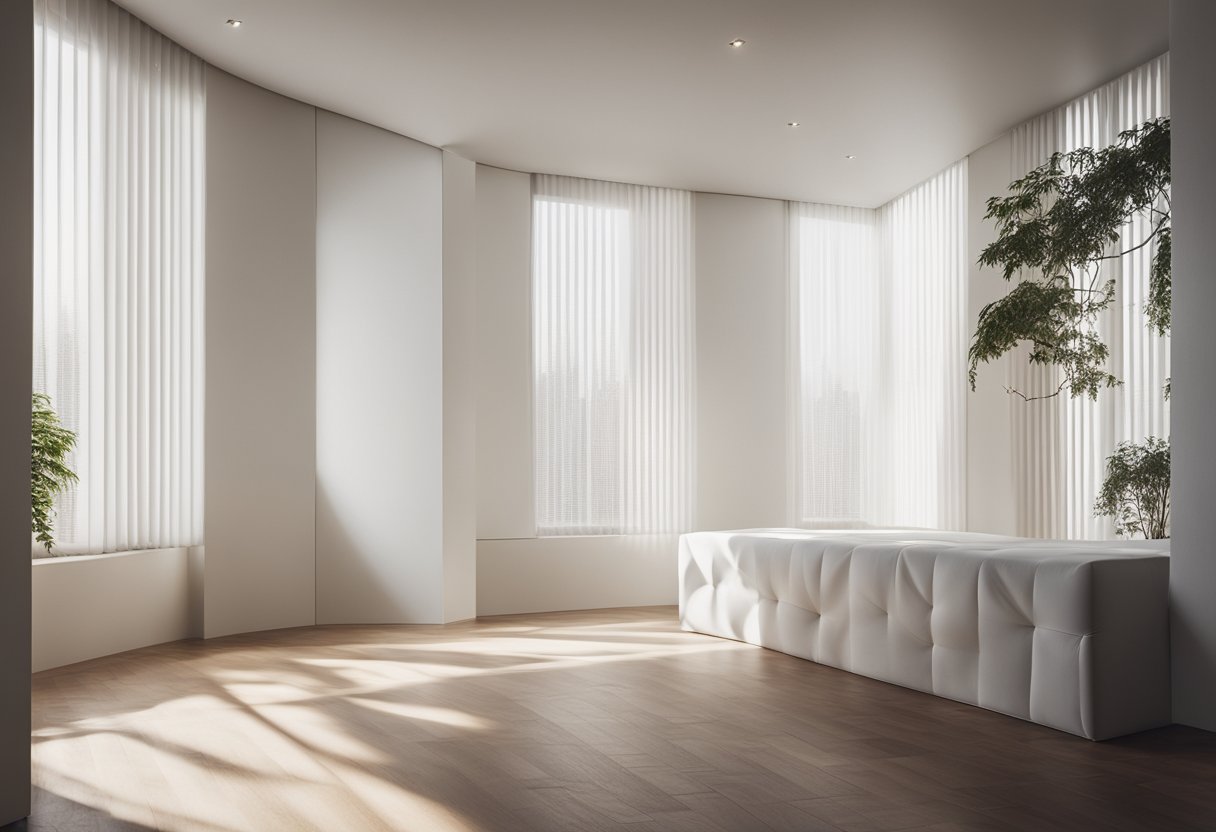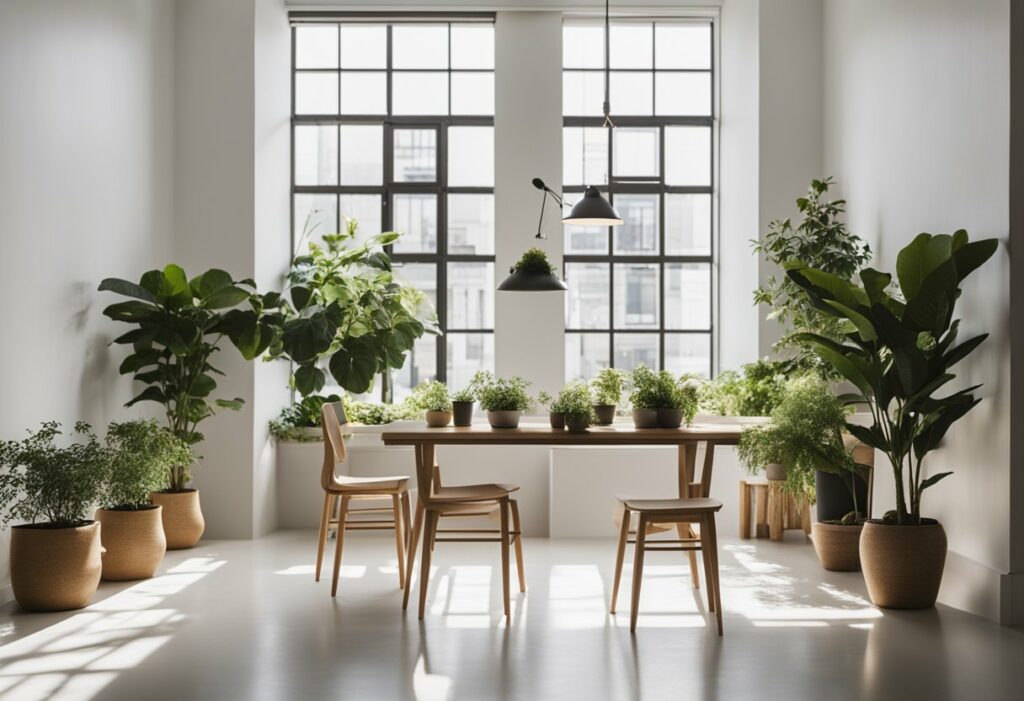White Room Interior Design: Creating a Bright and Airy Space
If you’re looking for a way to create a space that feels bright, clean, and timeless, then you might want to consider white room interior design. White interiors have been popular for decades, and for good reason. They can make a room feel larger, brighter, and more open, and they provide an excellent backdrop for other design elements, such as artwork, furniture, and accents.

To create a white room interior design, you don’t necessarily need to paint everything white. Instead, you can use white as a foundation and build upon it with different textures, accents, and shades. For example, you could use a mix of white fabrics, such as linen, cotton, and wool, to create depth and interest. You could also incorporate natural materials, such as wood, stone, and metal, to add warmth and contrast. By layering different elements and shades of white, you can create a space that feels cohesive and inviting.
Overall, white room interior design is a versatile and timeless style that can work well in a variety of spaces, from modern apartments to traditional homes. By following some basic principles and experimenting with different textures and accents, you can create a space that feels bright, airy, and inviting.
Key Takeaways
- White room interior design can make a space feel larger, brighter, and more open.
- White can be used as a foundation to build upon with different textures, accents, and shades.
- By following some basic principles and experimenting with different elements, you can create a cohesive and inviting white room interior design.
Fundamentals of White Room Interior Design

If you’re looking to create a bright and airy living space, then white room interior design is a great place to start. White is a timeless colour that can make any room feel fresh, clean and spacious. In this section, we’ll explore the fundamentals of white room interior design and how you can use this style to create a beautiful and inviting living space.
Embracing Space and Light
One of the key principles of white room interior design is embracing space and light. White walls and furnishings can help to reflect natural light, making your room feel brighter and more open. To maximise the amount of natural light in your room, consider using sheer curtains or blinds that can be easily opened during the day.
In addition to natural light, you can also use artificial lighting to create a bright and inviting living space. Consider using a combination of overhead lighting, lamps and spotlights to create a layered lighting effect that will help to highlight different areas of your room.
Choosing the Right White
When it comes to white room interior design, choosing the right shade of white is crucial. There are many different shades of white to choose from, each with its own undertones and characteristics. For example, some whites have warm undertones, while others have cool undertones.
To choose the right shade of white for your room, consider the other colours and materials that you will be using in the space. If you’re using warm colours like reds, oranges and yellows, then a warm white with yellow or pink undertones may be the best choice. On the other hand, if you’re using cool colours like blues and greens, then a cool white with blue or grey undertones may be more suitable.
Overall, white room interior design is a great way to create a clean, minimal and inviting living space. By embracing space and light and choosing the right shade of white, you can create a beautiful and timeless interior design that you’ll love for years to come.
Enhancing White Interiors with Textures and Accents

If you want to create a stylish and sophisticated interior, white is a great choice. However, it is important to avoid a space that feels too sterile or clinical. To create a welcoming and inviting atmosphere, you need to introduce textures and accents that add depth and interest to your white room. Here are some tips for enhancing white interiors with textures and accents.
Incorporating Textures
One of the easiest ways to add interest to a white room is by incorporating different textures. Layering textures is a great way to create a sense of depth and dimension. You can mix and match different textures, such as rough and smooth, matte and shiny, or soft and hard, to create a visually interesting space.
Consider adding textured elements such as a shaggy rug, a woven throw, or a chunky knit cushion. You can also add texture to your walls with wallpaper, textured paint, or a feature wall made of wood or stone.
Accentuating with Colors and Materials
White interiors provide a blank canvas for you to add pops of color and interesting materials. Adding accents in warm woods, black, gold, or other accent colors can create a striking contrast against white walls. You can also introduce natural materials such as rattan, jute, or woven wicker to add warmth and texture.
To create a focal point in your white room, consider adding an accent wall in a bold color or pattern. This can be achieved with wallpaper, paint, or even a mural. You can also add interest to your space with statement pieces, such as a bold piece of artwork or a unique light fixture.
In summary, enhancing white interiors with textures and accents is a great way to create a stylish and inviting space. By incorporating different textures, accentuating with colors and materials, and adding statement pieces, you can create a space that is visually interesting and welcoming.
Frequently Asked Questions

How can I add warmth to a white-themed living space to make it cosier?
Adding warm-toned textiles such as rugs, throws, and cushions can instantly make a white-themed living space feel cozier. You can also incorporate natural materials like wood or rattan to create a warm and inviting atmosphere. Don’t be afraid to mix and match textures to add depth and interest to the space.
What are the top modern design elements to incorporate in a white bedroom?
A white bedroom can be a blank canvas for a range of modern design elements. Consider adding statement lighting fixtures, a statement headboard, and modern artwork to create a focal point in the room. You can also incorporate metallic accents like brass or gold to add a touch of glamour.
How do you maintain a white interior without it feeling clinical or stark?
To prevent a white interior from feeling clinical or stark, incorporate a range of textures and patterns. Consider adding a textured rug, patterned curtains, or a statement piece of furniture to add visual interest to the space. Additionally, you can incorporate plants or natural elements to add a touch of greenery and warmth.
What colour accents work best with an all-white room to create a vibrant look?
When it comes to adding colour accents to an all-white room, consider bold and bright colours like mustard yellow, emerald green, or navy blue. These colours can add a pop of vibrancy to the space while still allowing the white elements to shine. Don’t be afraid to incorporate patterns or textures in these colours to add even more interest.
In what ways can a small space be designed using white to enhance its perceived size?
Using white in a small space can help to enhance its perceived size by reflecting light and creating an airy, open feel. Consider using white on the walls, ceiling, and even the furniture to create a seamless and cohesive look. Additionally, you can incorporate mirrors or other reflective surfaces to further enhance the illusion of space.
What psychological effects can an all-white interior have on mood and space perception?
An all-white interior can have a range of psychological effects on mood and space perception. White is often associated with purity, clarity, and cleanliness, which can create a sense of calm and relaxation in a space. Additionally, a white interior can create a sense of spaciousness and openness, which can be especially beneficial in smaller spaces.



